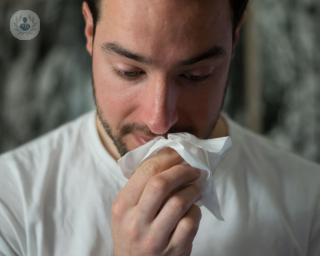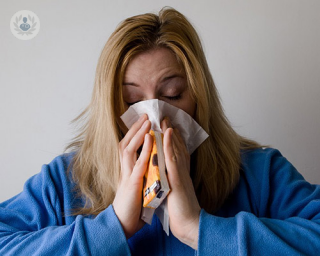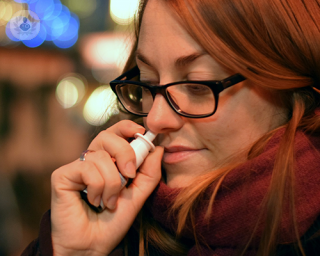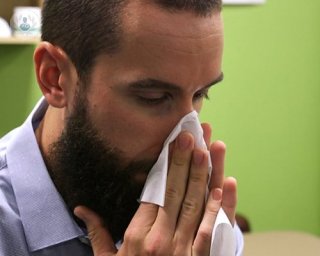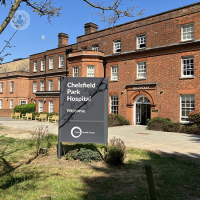Rhinitis
Professor Paul Chatrath - Otolaryngology / ENT
Created on: 11-13-2012
Updated on: 08-09-2023
Edited by: Carlota Pano
What is rhinitis?
Rhinitis is a condition where the nasal mucosa becomes inflamed or irritated. The nasal mucosa is the tissue lining of the inside of the nose that extends from the nostrils to the pharynx, which is the upper part of the throat. Rhinitis is a common condition and is thought to affect one in every five people in the UK.
Rhinitis can be classified into three main groups:
- Allergic rhinitis (for example, hay fever) that is triggered by allergies.
- Non-allergic rhinitis that appears to hav no apparent cause. This is more frequent after the age of 20.
- Atrophic rhinitis that occurs when the nasal mucosa and the underlying bones of the nose decrease in size. It is more common in tropical countries.
Rhinitis can be acute or it can be chronic (long-lasting). It can affect children and adults of any age.

What are the symptoms of rhinitis?
The main symptoms of rhinitis typically involve:
- Sneezing
- An itchy nose
- Itchy eyes
- An itchy throat
- Lack of smell
- A blocked or stuffed nose with nasal discharge (due to the nasal congestion, the individual generally cannot breathe freely or easily)
- Coughing
- Mucus in the throat
Symptoms mostly occur in the morning. They are the nose’s natural response to the irritation or inflammation. Symptoms can be confused with a simple cold, but a cold will resolve in around two weeks, whereas rhinitis persists.
If an individual has allergic rhinitis, the roof of their mouth may be itchy in addition to the rest of the symptoms. Symptoms of allergic rhinitis will appear within minutes of coming into contact with the allergen.
What causes rhinitis?
There are several causes of rhinitis.
- Allergic rhinitis: Allergic rhinitis is caused by the immune system reacting to an outdoor or indoor allergen, such as pollen, dust mites or animals.
This type of rhinitis often starts or flares up on a seasonal basis if the allergen is more abundant at that particular time of the year.
During an allergic response, the IgE antibody attaches itself to the cells that release histamine and other chemicals in the skin, the lungs and the body’s mucous linings. These chemicals open the blood vessels, causing redness in the skin and the swollen membranes.
An individual is at a higher risk of getting an allergy if they have skin conditions, such as acne or eczema, or if someone in their family also has an allergy.
- Non-allergic rhinitis: Symptoms of non-allergic rhinitis seem to start with no apparent cause. Even though it is not caused by an allergic reaction, an individual can have non-allergic rhinitis and still test positive for allergies.
Non-allergic rhinitis can be caused by:
- Infections
- Changes in weather (humidity and temperature)
- Certain medications
- Alcoholic drinks (including beer and wine)
- Hot or spicy food (for example, soups, spicy curry or dishes with hot peppers)
- Smoking
- Irritants in the air (for example, perfume or paint fumes)
- Hormonal changes (in pregnancy or puberty or from taking medication)
- Health conditions (for example, hypothyroidism, sleep apnoea, acid reflux)
- Sleeping on one's back
Within non-allergic rhinitis, infectious rhinitis is caused by infections (bacterial or viral); vasomotor rhinitis is caused by vasoconstrictor medications; hormonal rhinitis is caused by hyperthyroidism or pregnancy; mechanical rhinitis is caused by foreign bodies or a deviated septum.
- Atrophic rhinitis: Atrophic rhinitis is caused by the reduction in size of the nasal mucosa and the underlying bone. This type of rhinitis is characterised by the formation of dry crusts in the nasal cavity.
How can rhinitis be prevented and treated?
Treatment measures for rhinitis include:
- Antihistamines
- Decongestant nasal sprays or drops
- Salt water nasal sprays or solutions
- Corticosteroid sprays
- Immunotherapy
- Antibiotics
- Surgery
- Regularly cleaning of the nasal passages
For allergic rhinitis, it is difficult to completely avoid the triggering allergens, however, attempts can be made to reduce exposure, such as avoiding leaving the house early in the morning when pollen is at its worst or keeping the windows closed.
For non-allergic rhinitis, an individual should avoid the triggering causes of their symptoms. Non-allergic rhinitis usually improves on its own without the need for treatment, but if required, treatment measures can effectively ease symptoms. However, people should seek the help of an ENT specialist if the cause of their symptoms is unclear or if their symptoms are severe.
What is the difference between rhinitis and sinusitis?
Rhinitis occurs when the nasal mucosa becomes inflamed or irritated.
Sinusitis, on the other hand, is the inflammation of the lining of the sinuses, which are the four pairs of hollow air-filled spaces in the skull. The sinuses become blocked and filled with fluid, causing germs to proliferate. This results in symptoms, including headache and yellow nasal secretions. The common cold, the flu, hay fever (pollen) or nasal polyps can cause the blockage of the sinuses.
Sinusitis can be acute or chronic. Acute sinusitis generally lasts less than four weeks and improves on its own, while chronic sinusitis lasts for more than 12 weeks and may need treatment, such as antibiotics, decongestant nasal sprays or functional endoscopic sinus surgery.
Which specialist treats rhinitis?
An ENT (ear, nose and throat) specialist will carry out an evaluation and provide a personalised treatment plan for the management of rhinitis.
Can rhinitis affect the eyes?
Among the rest of the symptoms of rhinitis, allergic rhinitis can cause red, itchy and watery eyes. These symptoms generally appear within minutes of coming into contact with the allergen.
How can rhinitis lead to rhinosinusitis?
Rhinosinusitis is a term used to describe inflammation of both the nasal mucosa and the sinuses. This can occur, for example, if an individual has allergic rhinitis and sinusitis; allergic rhinitis blocks the nose, causing obstruction. Mucus accumulate in the nose, blocking the sinuses and causing sinusitis.

